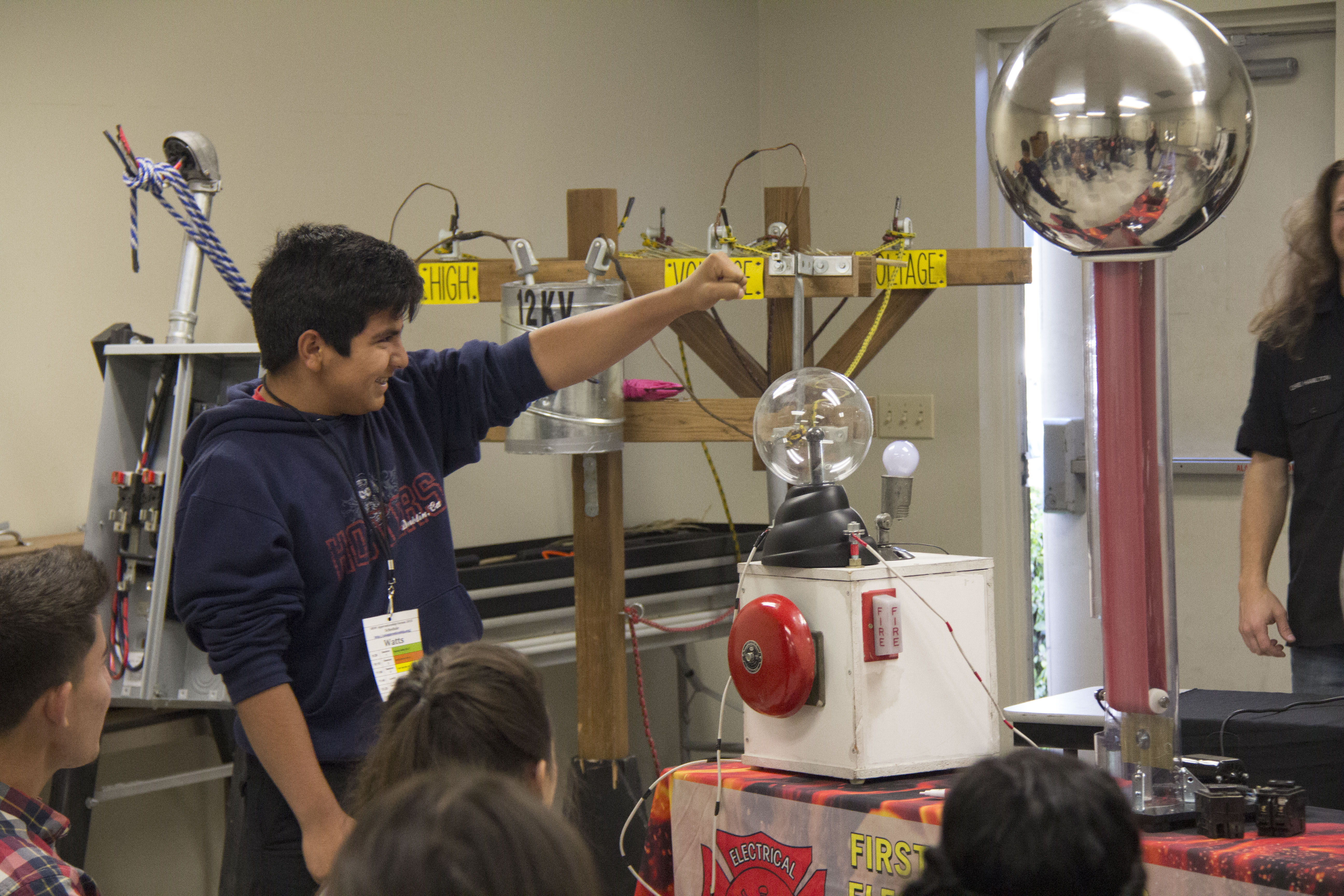
eSource
San Bernardino County Superintendent of Schools
Every day, YouTube generates billions of views. Eighty-five percent of young adults own a Smartphone, and more than half of parents report using technology to keep children younger than age three entertained. As technology changes the ways in which kids consume information, are schools also changing the way they deliver and distribute educational content?
The answer is “yes” for students in San Bernardino County, where a digital/online multimedia platform called eSource is enhancing the curriculum, engaging learners and transforming teaching.
The eSource bank of electronic resources and services offers contracting districts:
• Media streaming capability via CaliforniaStreaming;
• Vetted educational web resources;
• Staff development to help teachers integrate technology into the curriculum; and
• Partnerships that bring an expanded array of reliable, sustainable resources.
“This is really a one-stop shop for educators,” said Gil Diaz, former coordinator of Curriculum/Instruction and Academic Enrichment for San Bernardino County Superintendent of Schools. “Common Core is asking students to analyze many types of media, including video, not just print as in the past. By bringing in digital tools, our students have the best possible resources.”
CaliforniaStreaming, one of the resources available to districts that contract with eSource, is a project of the California County Educational Technology Consortium (CCETC). The CCETC consortium provides high quality multimedia including video, audio, images, print resources, and podcasts. CCETC is owned by its county office of education (COE) members and funded by their contributions, which are based on student enrollment.
Committees made up of staff from member COEs vet and purchase the content. Diaz said CCETC members attend the National Media Market every year to preview “the latest and greatest on the market and bring back what we find to be best aligned with and in support of the California Content Standards. As a consortium we decide what we license based on what districts and curriculum specialists have told us they’re looking for, vet those resources, and align them to standards.”
Julie Drake, consultant III with the Los Angeles County Office of Education (LACOE), serves as a board member of CCETC and offers MediaSnap, which is LACOE’s counterpart in partnership with San Bernardino’s eSource.
She said CCETC is a mix of curriculum specialists, technology experts, media librarians, and others, many with classroom backgrounds. “This diversity provides a good lens into what’s needed in classrooms by teachers,” Drake said.
“Each COE is able to personalize and promote CaliforniaStreaming based on its COE’s vision and needs,” Diaz said.
In addition to CaliforniaStreaming, both eSource and MediaSnap have partnerships with a number of other electronic educational resources, including Library of Congress, Khan Academy, Pics4Learning, Storynory, Project Gutenberg, encyclopedias, and Annenberg Learner.
“eSource and MediaSnap are multimedia educational portals. We curate a selection of resources and create partnerships, as opposed to teachers going out and doing a search on a browser and being overwhelmed with the amount of resources they need navigate to find ones that are instructionally sound and copyright compliant,” Drake said.
In addition, these multimedia platforms are secure and contain information that comes from trusted sources. Students have access on any device from any location, once they have their login.
Diaz said both San Bernardino and Los Angeles counties have a lot of English learners who wouldn’t normally have access to these types of learning resources. “The richness of multimedia enhances lessons and amplifies learning. Students can do things like take virtual trips to museums that expand the classroom walls.”
Drake said there is “decades-long research that shows the impact of using visuals to help students learn abstract content.”
These electronic resources support what students are going to be tested on, she said. The California Assessment of Student Performance and Progress, the state’s new test, asks students to analyze primary source documents and use drag and drop technology. “Exposing students to multiple hands-on opportunities better prepares them for the new California state assessments,” she said.
The use of electronic resources is “embedded into all our staff development and training,” Diaz said. “We’re not just teaching one aspect of how to use technology.”
“One of the things we’re most proud of is that our video clips have not only been vetted, we’ve identified smaller, three- to four-minute video segments teachers can use strategically to hit what they want to cover in the unit of study, then continue on with their lesson plan,” he said. “They don’t have to show an entire 40-minute video.”
Teachers say having access to primary source documents has transformed their lesson planning, Diaz said. “Teachers who had been afraid to use technology are now using it themselves and encouraging students to create projects like digital documentaries.”
While video resources are available from textbook publishers, Diaz said their offerings may be limited and costly.
“This is the first English Language Arts/English Language Development framework ever, and the multimedia material being offered by publishers may be limited. We’re trying to be more responsive to the needs of teachers, and we’re providing material that’s much easier to access,” Diaz said.
Perhaps most important of all, students are learning skills that will help them be successful after they leave high school.
For more information:
• The eSource portal contains descriptions of offerings and links to CaliforniaStreaming and CCETC.
• The California County Educational Technology Consortium website features a list of members and information about its projects.
• Los Angeles County Office of Education’s MediaSnap website features a media gallery of thousands of student-created, teacher-created and professional development videos.
• Winning images from the CaliforniaStreaming digital photography contest show the depth and diversity of student work.






